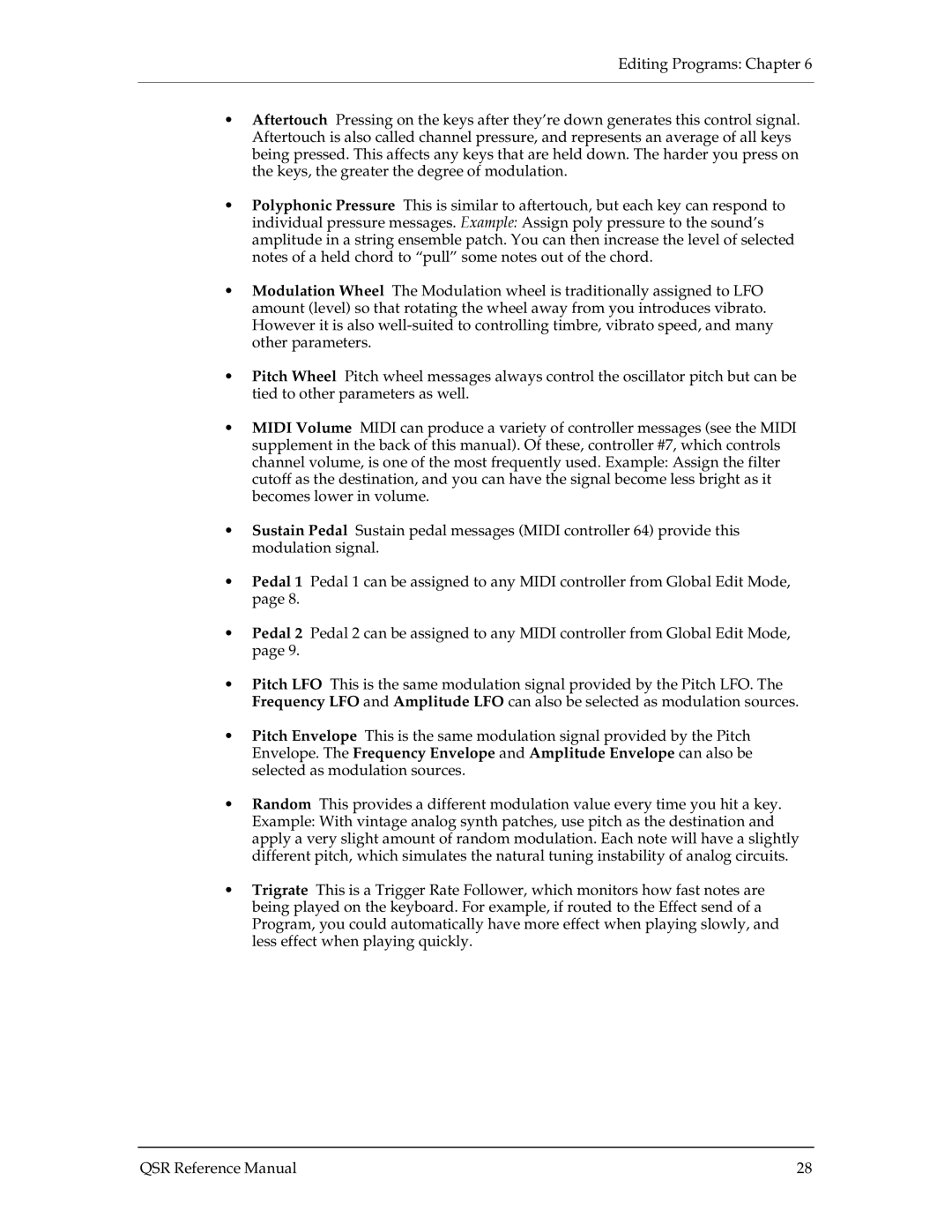
Editing Programs: Chapter 6
•Aftertouch Pressing on the keys after they’re down generates this control signal. Aftertouch is also called channel pressure, and represents an average of all keys being pressed. This affects any keys that are held down. The harder you press on the keys, the greater the degree of modulation.
•Polyphonic Pressure This is similar to aftertouch, but each key can respond to individual pressure messages. Example: Assign poly pressure to the sound’s amplitude in a string ensemble patch. You can then increase the level of selected notes of a held chord to “pull” some notes out of the chord.
•Modulation Wheel The Modulation wheel is traditionally assigned to LFO amount (level) so that rotating the wheel away from you introduces vibrato. However it is also
•Pitch Wheel Pitch wheel messages always control the oscillator pitch but can be tied to other parameters as well.
•MIDI Volume MIDI can produce a variety of controller messages (see the MIDI supplement in the back of this manual). Of these, controller #7, which controls channel volume, is one of the most frequently used. Example: Assign the filter cutoff as the destination, and you can have the signal become less bright as it becomes lower in volume.
•Sustain Pedal Sustain pedal messages (MIDI controller 64) provide this modulation signal.
•Pedal 1 Pedal 1 can be assigned to any MIDI controller from Global Edit Mode, page 8.
•Pedal 2 Pedal 2 can be assigned to any MIDI controller from Global Edit Mode, page 9.
•Pitch LFO This is the same modulation signal provided by the Pitch LFO. The Frequency LFO and Amplitude LFO can also be selected as modulation sources.
•Pitch Envelope This is the same modulation signal provided by the Pitch Envelope. The Frequency Envelope and Amplitude Envelope can also be selected as modulation sources.
•Random This provides a different modulation value every time you hit a key. Example: With vintage analog synth patches, use pitch as the destination and apply a very slight amount of random modulation. Each note will have a slightly different pitch, which simulates the natural tuning instability of analog circuits.
•Trigrate This is a Trigger Rate Follower, which monitors how fast notes are being played on the keyboard. For example, if routed to the Effect send of a Program, you could automatically have more effect when playing slowly, and less effect when playing quickly.
QSR Reference Manual | 28 |
